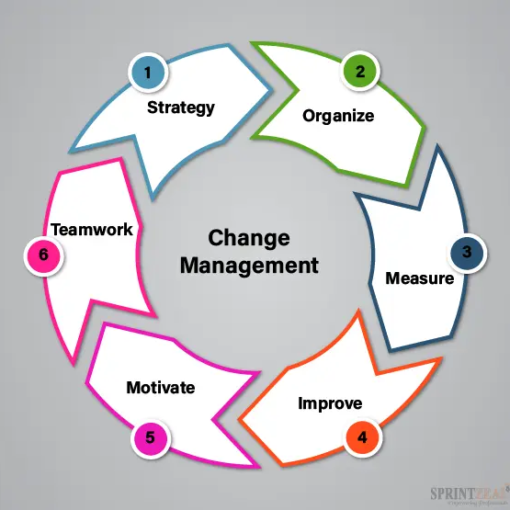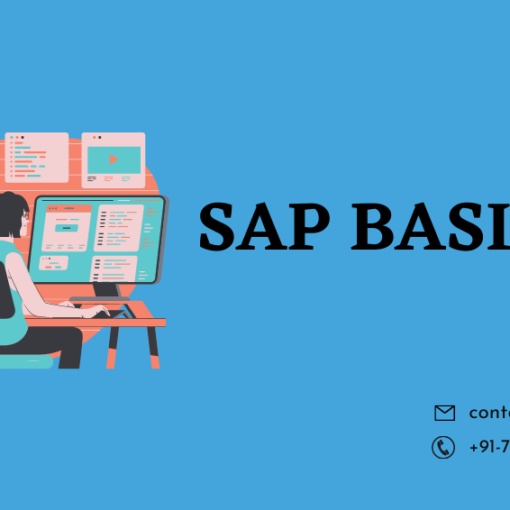A modern enterprise resource planning solution like SAP S/4 HANA hardly ever goes unnoticed in any business. Also not an exception is the financial industry. SAP in banking sector customers and banks alike are eager to take advantage of the advantages of digital transformation to increase their profits.
Trends in Digital Transformation Affecting the Banking Sector
The benefits of digital transformation trends like Blockchain technology, robotic process automation, and conversational artificial intelligence are already beginning to trickle down to the banking sector. Additionally, it yielded some promising outcomes. For instance, banks have been able to save 20% on capital expenditures because to the integration of smart and intelligent computer systems. Additionally, by automating the operations, banks were able to save 3,60,000 hours of manual labor thanks to AI.
Why the Banking Sector Should Adopt SAP S/4 HANA:
Let’s Examine the Key Motivators
Whether it is connected to commercial banking operations, finance and risk management, retail banking and loan management, or scaling up the payment methods and communications, SAP S/4 HANA plays many roles in delivering change to the banking sector.
SAP S/4 HANA use Enhancing Customer Experience for Banks
S/4 HANA provides suitable solutions to digitalize the client experience because SAP is aware that banks want to prioritize it. The crucial areas are:
Commerce Personalization Consent-Based Marketing Self-Service Services for digital banking Managing Omnichannel Customer Solutions and Omnichannel Commerce Channel Increasing Marketing Channel Efficiency Customer Service Through One Window
1. SAP S/4 HANA initially makes an effort to personalize commerce by building and maintaining consumer profiles via online shops and data sources. Through customer-focused advertising, it is possible to retarget consumers who have uninstalled the app.
2. In order to target more customers and generate more sales leads over time, it engages in consent-based marketing tactics.
3. Commercial and retail omnichannel experiences serve as the foundation for digital banking self-service. It enhances client experience while enabling a reduction in total cost of ownership.
4. The banks are able to build amazing contact points across channels, manage digital assets, and collaborate on workflows thanks to the omnichannel commerce management.
5. By providing real-time insight into strong data and accessible tools, omnichannel customer care surpasses client expectations.
6. You can gain better visibility and control over the marketing process with optimized marketing campaign satisfaction.
7. Single Customer View is a single window that gives you access to all of your customers and allows you to personalize their experience to increase traffic.
SAP S/4 HANA’s function in retail banking
SAP S/4 HANA has helped streamline retail deposits and centralized payment processing in retail banking.
- S/4 HANA makes it possible to manage all cards, their lifecycles, and the issuance procedure.
- Processing accounts in large numbers quickly increases the bank’s efficiency.
- Automating payment processing aids in lowering Total Cost of Ownership (TCO).
- By shortening the time to market, it streamlines product and contract administration.
Let’s clarify its function in Retail Deposits S/4 now.
- By assisting in the processing and management of the legal reporting numbers, HANA makes it easier to integrate into the system environment of the bank.
- Based on the precise information of the account holder, the banks can now calculate the tax on capital gains with ease.
Select the Retail Lending ERP Business Suite.
- The entire loan administration procedure is streamlined as a result.
- In both commercial and retail banking, it facilitates collateral management.
- The processing and management of money and various assets are made simpler.
Commercial Banking using SAP S/4 HANA
It largely adheres to the same processes while providing its services for commercial banking, including account processing, automation of the payment process, management of the product and contract, and optimization of customer cash deposition.
In fact, business lending activities resemble those of retail lending almost exactly. Fund management, deposition administration, and collateral management are also a part of this activity.
But multi-bank interconnection is what sets SAP’s involvement in commercial banking apart. Through enhanced connectivity and seamless integration, it enhances the customer-bank relationship.
- Exchange of financial messages, combined with knowledge of the client, aids in cost reduction and sales growth.
- Improve the interconnectedness of several banks globally while increasing income through value-added services.
- Overall, it seeks to save expenses while enhancing agility.
Finance and risk management with SAP S/4 HANA
The finance and risk management procedure is an essential component of the banking system. Greater financial insight visibility and quicker control of the accounting close will be made possible by S/4 HANA. Let’s talk about this in more detail:
Through S/4 HANA For a set time, the banks can provide assistance with the correct preparation, execution, and supervision of the financial closing. The statistics show that at the financial closing, the banks were able to save 15% of their time.
Best-in-class financial close governance is promoted by the ERP solutions.
With an ERP component, it enables the processing and management of financial accounts.
offers real-time financial data correction, cutting down on the time and expense required for regulatory filings and disclosures.
What is a bank master in SAP?
In SAP, the Bank Master is a central repository that stores and manages information related to banks and financial institutions. It is a part of the SAP Financial Accounting (FI) module and is used to maintain banking-related data in the system. The Bank Master serves as a reference for various financial transactions and processes within the SAP system.
Here are some key aspects of the Bank Master in SAP:
- Bank Data: The Bank Master contains detailed information about banks, such as bank names, addresses, contact details, bank account numbers, and bank keys. This data is used in various financial processes, including payment processing, vendor payments, customer receipts, and bank reconciliation.
- Bank Account Management: The Bank Master allows for the management of bank accounts associated with each bank. It includes details such as account numbers, account types, currency, and account control parameters. Bank accounts are linked to relevant business partners, such as customers or vendors, to facilitate efficient financial transactions.
- Payment Methods: Within the Bank Master, payment methods can be defined and assigned to specific banks. Payment methods determine the electronic or manual payment formats used for different types of transactions. Examples of payment methods include check payments, electronic funds transfers (EFT), or direct debits.
- Bank Determination: The Bank Master plays a crucial role in determining the appropriate bank for financial transactions. Based on predefined rules and criteria, the system identifies the relevant bank based on factors such as country, postal code, or partner information. This ensures accurate and efficient routing of payments and receipts.
- Bank Reconciliation: The Bank Master supports bank reconciliation processes by providing details of bank statements and allowing for the mapping of bank statement formats. Bank statements received from banks can be imported into the system, and automatic reconciliation functionality compares the statement data with the transactions recorded in the system.
- Integration with Financial Processes: The Bank Master integrates with other financial processes in SAP, such as Accounts Payable (AP), Accounts Receivable (AR), and General Ledger (GL). It ensures consistency and accuracy in financial transactions by providing a centralized source of banking information.
By maintaining comprehensive bank-related data in the Bank Master, organizations can streamline financial processes, ensure accurate payment handling, facilitate bank reconciliation, and comply with regulatory requirements. It serves as a foundation for efficient financial management within the SAP system and supports seamless integration with external banking systems and services.
Conclusion:
In an era of rapid technological advancements and evolving customer expectations, SAP has emerged as a game-changer in the banking sector. With its comprehensive suite of solutions, SAP empowers banks to streamline core operations, enhance customer experiences, manage risks and compliance, leverage advanced analytics, and drive digital transformation. By harnessing the power of SAP, banks can achieve operational excellence, improve profitability, foster innovation, and deliver superior financial services to their customers. Embracing SAP is not just a strategic choice for banks; it is a transformative step toward shaping the future of banking.





